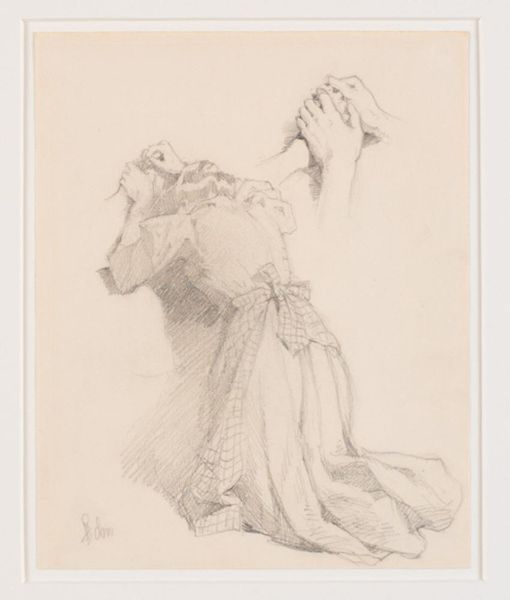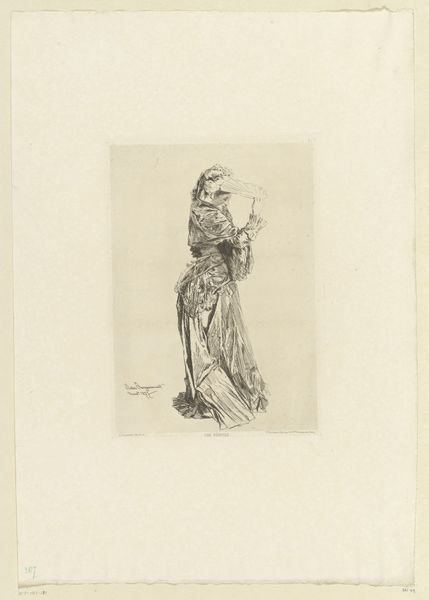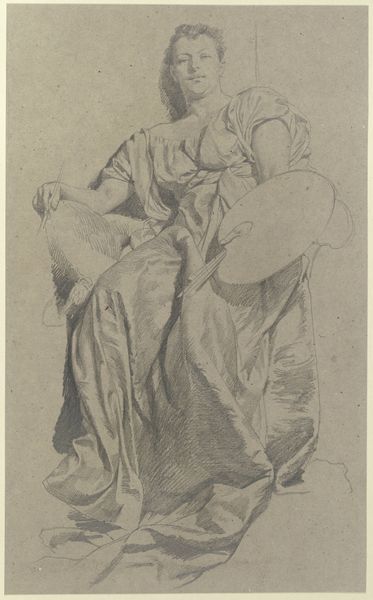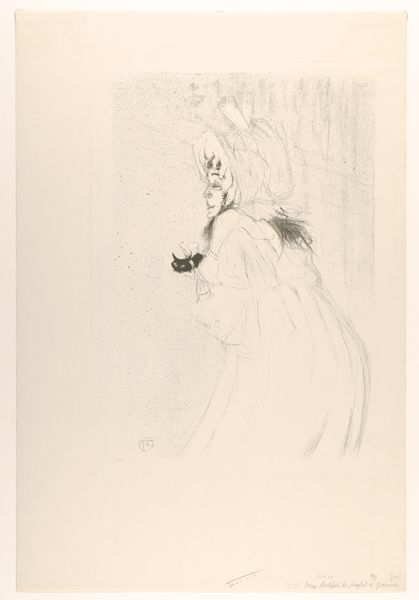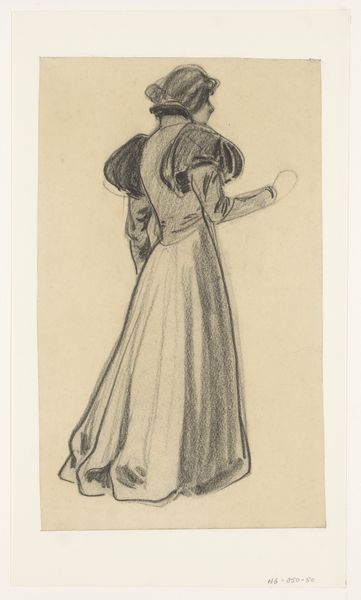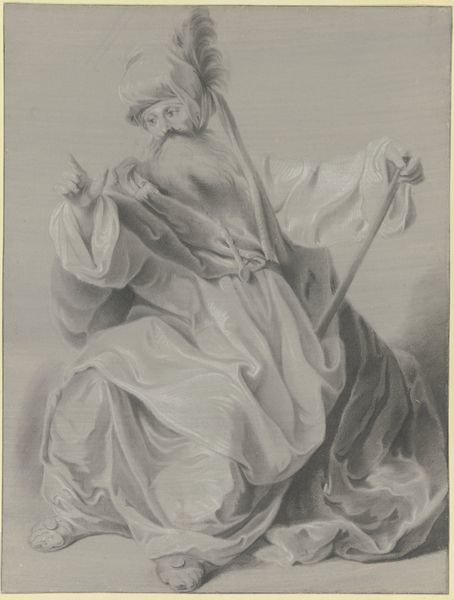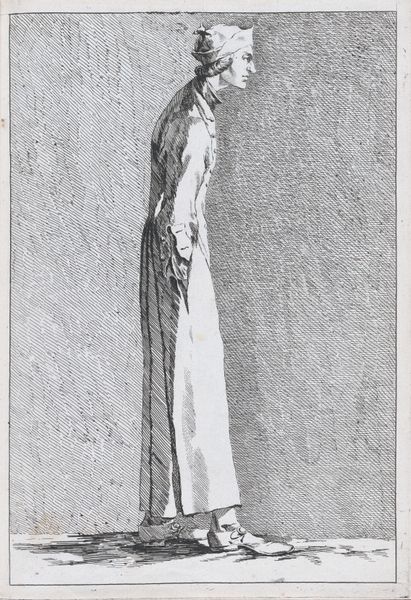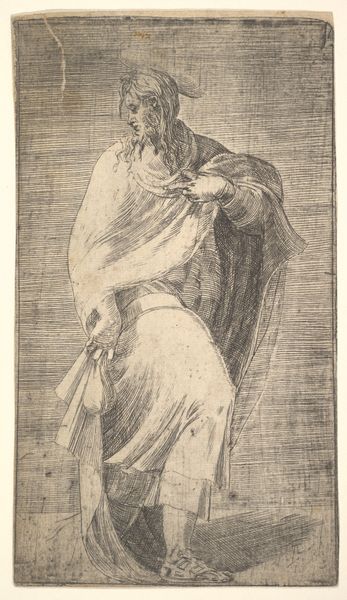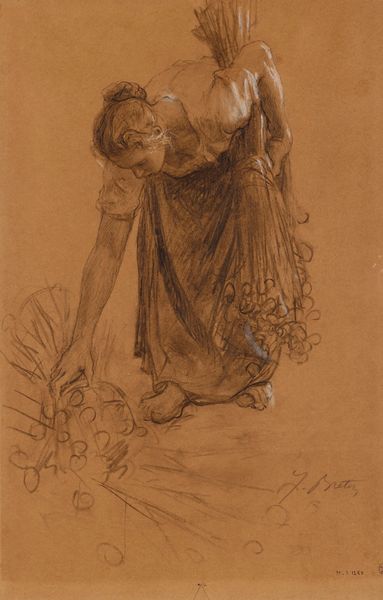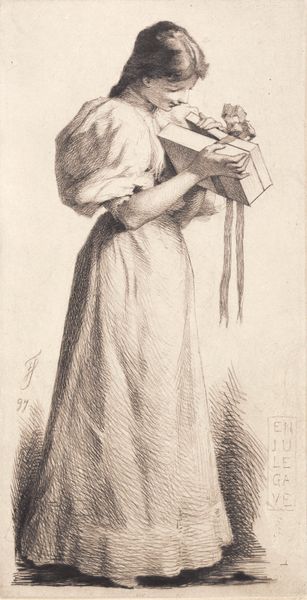
Knælende ung kvinde set fra ryggen og studie af hænder 1850 - 1917
0:00
0:00
drawing, pencil
#
portrait
#
drawing
#
pencil sketch
#
figuration
#
pencil
#
portrait drawing
#
academic-art
Dimensions: 260 mm (height) x 208 mm (width) (bladmaal)
Curator: At first glance, there's a quiet intensity about this drawing, a vulnerability almost. Editor: Precisely. We’re looking at a pencil drawing by Frans Schwartz titled "Kneeling Young Woman Seen From The Back and Study of Hands." It's currently held here at the SMK. The image shows exactly what the title says, with an interesting placement of a 'study of hands' above the young woman. Curator: Pencil drawings allow us to appreciate the pure craft of creating an image, and you really notice it here. Look at the line work. I wonder what grade of pencil he might have favored. And the way he has used delicate hatching to depict shadows on the skirt; so tactile! Editor: Indeed, considering the drawing was executed sometime between 1850 and 1917, we have to consider the role and limited social mobility offered to women during this period. The kneeling pose suggests humility and potentially alludes to religious piety, given the societal expectations. The disembodied hands imply additional layered possibilities regarding control or assistance. Curator: Do you think Schwartz's economic position gave him the freedom to experiment with subject and technique, moving away from some of the traditional constraints? The labor to produce that finely graded shading can be compared to highly crafted textile production which also creates subtle differences on fabric through subtle variations on yarn density and weaving style. It feels connected to that. Editor: Certainly, but that experimental freedom doesn’t negate that fact that the male gaze would very much play a part in a depiction of a woman, so we need to see how ideas of the artist’s subjective ideas and wider visual culture mix. We need to think what a late 19th or early 20th century audience would think of this work. Curator: I do think the lack of facial features is really striking – it is so different than much portraiture of the period. That said, I also think it leaves us able to insert ourselves into the picture far more. Editor: It invites a layered contemplation, and I appreciate Schwartz prompting dialogue around womanhood in changing times. Curator: Definitely! For me, it highlights just how much the production techniques and processes really influence not only the material work, but the social context around it too. Editor: And seeing it prompts those conversations – to reflect on visual traditions and our evolving contemporary perspectives.
Comments
No comments
Be the first to comment and join the conversation on the ultimate creative platform.
